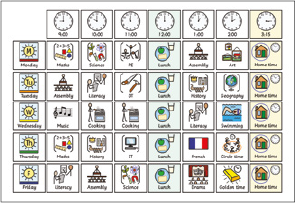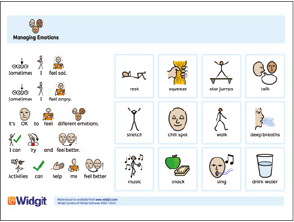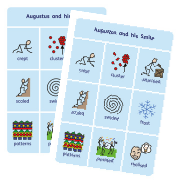Reduced vocabulary can delay a child’s spoken and written language, which may limit progress and make social aspects of school life challenging.
Any child can be affected, regardless of their background or whether they have additional needs, but schools can support pupils using visual aids in the form of symbols.
So, how can symbols help?
Encourage independence

Lesson timetables can include a symbol for each subject – a book for literacy hour or a written equation for maths, for example. Teachers use an arrow to indicate which subject is currently being taught.
Symbolic timetables give children with limited vocabulary a simple way to see what is being taught now, what’s coming up next and when to expect learning breaks. They can boost skills such as sequencing and time awareness and eliminate the pressure to interpret written text quickly, helping children to be more self-sufficient in school.
Support wellbeing

No child will be ready to learn if they come into the classroom anxious or distressed. Emotion cards which include symbolic facial expressions make it easier for pupils to indicate how they are feeling when they don’t have the language to verbalise it.
If a child with limited vocabulary arrives in class upset because they had an argument with a friend before school, they could be encouraged to point to the image of a sad or angry face. Teachers can then open a discussion and help.
A dedicated mindfulness area in the classroom can give pupils somewhere they can go to learn self-calming techniques too, such as deep breathing when they are stressed or anxious. Designing the space with symbolised images of the techniques will automatically make it more accessible for children with limited vocabulary as the relaxation activities are displayed in a very visual way.
Build vocabulary
Teaching Tier 2 words such as ‘crept’ or ‘scaled’ in advance of a lesson helps build children’s understanding and retention of these words in written and spoken form enabling teachers to focus lesson time on embedding learning objectives.
Symbols provide a simple visual prompt to help children with gaps in their vocabulary develop and retain the language they need to engage in learning and succeed.

If your school uses Language Link, you’ll find a comprehensive set of visual support resources in our classroom support section.

Sue White is co-author of Walking the Talk: A vocabulary recovery plan for primary schools. For more information on how symbols can support your pupils, visit www.widgit.com
Please login to view this content
Login